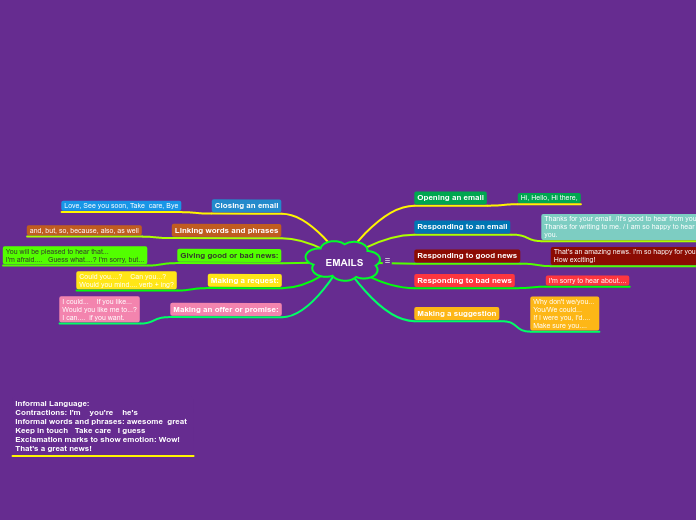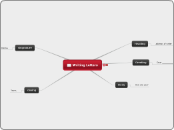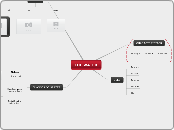BUSINESS SHORT TEXTS
This mind map comes in handy if you are in the middle of job searching. Gather all the possibilities, then with the help of the mind map choose whichever fits your needs best.
E-MAILS
Generally, we begin informal emails with Dear…, Hi…, Hello… followed by a comma
Etiquette, style, and format are essential to writing emails that get results
Business emails are a pillar of modern communication.
We can find informal and formal or business emails
Keep track of your applications so you won't send it twice to the same employer.
You can also separate the responses which might turn into an offer.
CLASSIFIED ADS
A brief advertisement in a newspaper, magazine or web page dealing with offers or requests for
jobs, houses, cars, etc
Three components
The CTA (call-to-action) What to do and how
The body (important information)
The headline (to catch the reader’s attention)
To advertise your business, sell, offer, ask for jobs, houses, vehicles, products, services and more.
-In magazine, newspapers, online websites or apps, etc
Effective and inexpensive
OFFICIAL BUSINESS FORMS
You might get offers at first or you might need to negotiate; either way, list here all of your offers so you can easily compare them and choose.
Utility
many businesses require forms for legal purposes
types of documents that are commonly used in running a bussines
LETTERS
Formal
Different formal letters
RECOVERY LETTERS
SALES LETTERS
PROMOTION LETTERS
LETTERS OF COMPLAINT
ORDER LETTERS
LETTERS OF ENQUIRY
Pay attention towards the targeted audience
Avoid adding extra details or information
The content must be clear, concise and understandable
Avoid slang and use of abbreviations or contractions
Only use easy and clear language
The language must be formal
A formal letter has a format which needs to be followed. A typical formal letter format is
Designation of the Sender
Signature / Name of the Sender
Complimentary Close
Body – Introduction, Content, Conclusion
Subject
Salutation
Address of the Addressee
Name / Designation of Addressee
Date
Sender’s address
Informal
Write down all your online networking profiles: e.g. LinkedIn.
We sign the text at the end.
We can use contractions (for example: don’t, isn’t, etc.)
The introduction is the first paragraph, here we ask about our friend’s health, we thank her/him for her/his
previous email, we mention the reason for writing, etc
You write the date under the address.
We write our address, (street, city or village and post code) in the top right-hand corner
We begin letters with a GREETING: Dear…, we use commas not semi-colon
MEMOS
Characteristics
Use a short thank you to finish the memo. This doesn’t need to be as formal as in a written letter.
Use bullet points to explain the most important steps in a process.
If necessary, introduce the reason for the memo with a short paragraph.
Keep the memo concise and to the point.
The tone of a memo is generally friendly as it is a communication between colleagues.
A memo is generally not as formal as a written letter. However, it is certainly not as informal as a personal letter.
The term "memorandum" can be used instead of "memo".
They are sent to other people within the
same organization
Cassification
Type in here your dream job, or the next best thing you would do for a living.
You can also write down those companies who you would gladly work for.
Memos are an important form of written communication within companies









